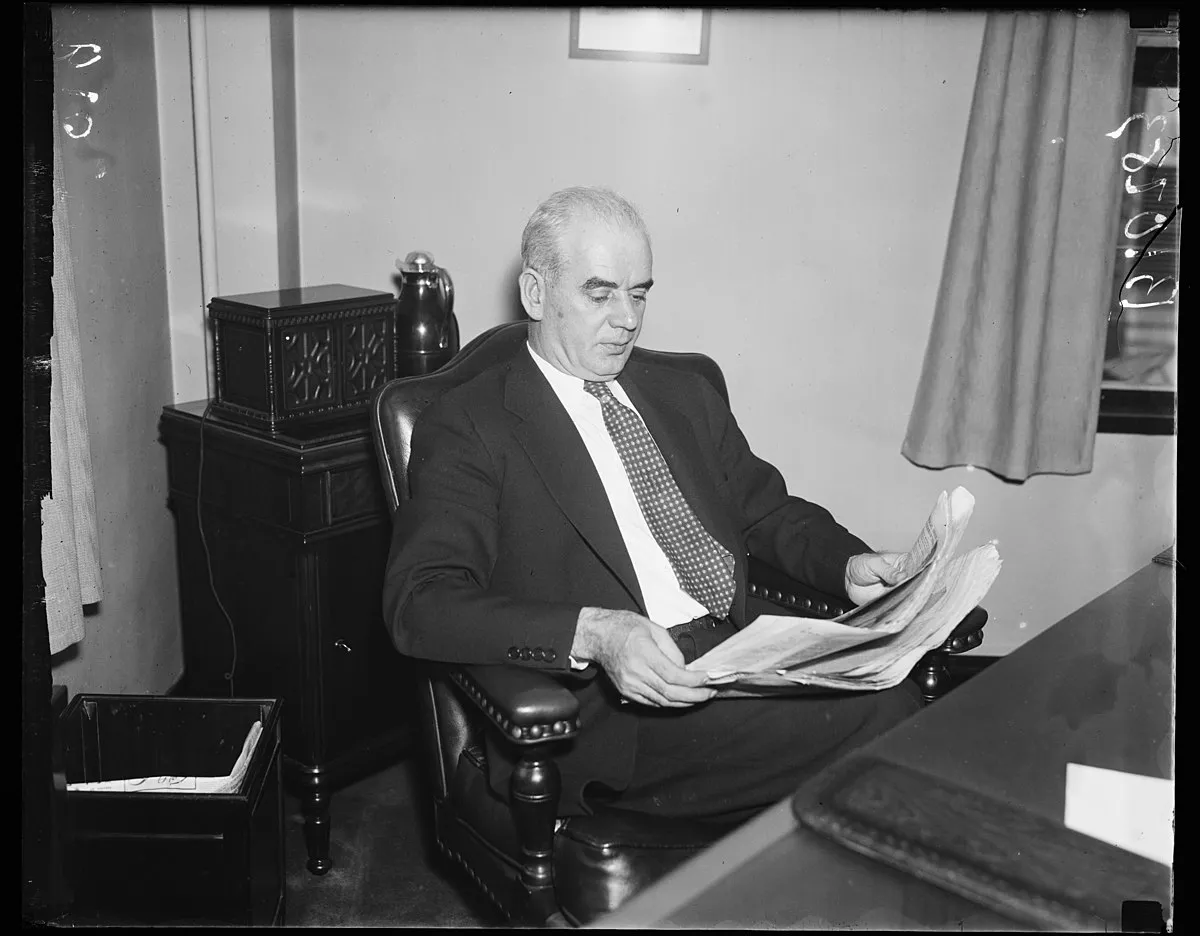 1.
1. Philip Murray was a Scottish-born steelworker and an American labor leader.

 1.
1. Philip Murray was a Scottish-born steelworker and an American labor leader.
Philip Murray was the first president of the Steel Workers Organizing Committee, the first president of the United Steelworkers of America, and the longest-serving president of the Congress of Industrial Organizations.
Philip Murray's father, William Murray, was a Catholic coal miner and union leader who emigrated from Ireland to Scotland prior to his son's birth.
Philip Murray's mother, the former Rose Layden, was a cotton mill weaver.
Young Philip Murray was paid for each ton of coal that he mined.
Philip Murray was working in a coal mine in 1904 when he became involved in the United Mine Workers of America.
In 1905, Philip Murray was elected president of the UMWA local in the Pittsburgh area town of Horning, Pennsylvania.
Philip Murray married Elizabeth Lavery on September 7,1910.
In 1911, Philip Murray became a naturalized citizen of the United States.
Philip Murray supported Lewis's bid to become a UMWA vice president in 1917, and UMWA president in 1920.
Philip Murray became a strong supporter of and assistant to Lewis.
Lewis handled relations with employers and politicians, and Philip Murray handled relationships with UMWA members.
Philip Murray strongly supported America's entry into World War I and worked closely with government officials and employers to ensure that labor cooperated in the war effort.
When General Hugh S Johnson formed the Labor and Industrial Advisory Board in 1933 to implement Section 7 of the National Industrial Recovery Act, Murray agreed to serve on the new body.
Philip Murray played a key role in writing the "Bituminous Coal Conservation Act of 1935", later struck down by the United States Supreme Court in Carter v Carter Coal Co.
Philip Murray was active both in the CIO and in SWOC, the steelworkers' organizing project.
Philip Murray oversaw a $500,000 budget and 36 organizers.
Under Philip Murray, SWOC made a dramatic breakthrough when, on March 2,1937, it signed a collective bargaining agreement with US Steel.
Philip Murray was elected second vice president of the CIO at its first formal convention in November 1938.
When Lewis retired as CIO president in 1940, Philip Murray was elected president as his successor.
Philip Murray was elected president of the CIO on November 22,1940.
Such actions were justified, Philip Murray argued, in light of the vigorous resistance to the union displayed by steelmakers.
Philip Murray took over as president of the CIO, he found the federation in deep financial and organizational distress.
Philip Murray quickly instituted a series of reforms to stabilize it.
Philip Murray collected back dues from members and unions alike, reined in expenses, shuttered or cut off marginal organizing projects and unions, pulled organizers out of unions, and slowly ended the organization's dependence on subsidies from the Mine Workers.
When Philip Murray transformed SWOC into USWA and installed himself as president, Lewis retaliated.
Philip Murray strongly supported the Roosevelt administration and the war effort during World War II.
Philip Murray quickly adopted a "no strike pledge" on behalf of all CIO unions, and supported the establishment of industry union councils to promote increased production, quicker retooling, and overcoming design problems.
In 1943, Philip Murray advocated making the Fair Employment Practice Committee a permanent government agency.
Philip Murray served on the National Defense Mediation Board and a number of other government agencies to help promote the war effort.
In July 1943, Philip Murray had established a permanent political action committee within the CIO, the CIO-PAC, the first-ever PAC in the United States.
Philip Murray refused to sign the required anticommunist affidavit on the grounds that it was demeaning.
Nevertheless, Philip Murray was no radical, and he aggressively purged the CIO of 11 left-leaning unions in 1949 and 1950.
Philip Murray led the USWA through a second successful strike in 1949.
Philip Murray won a doubling of the pension benefit, with the employer continuing to pick up the entire cost.
In 1952, Philip Murray led the USWA in its most famous strike.
Philip Murray responded that it could not agree without prior government approval of commensurate price increases.
Philip Murray agreed to delay a planned January 1,1952 walkout until the Board had made its recommendation.
Steel supplies finally began to dwindle, and Philip Murray feared the public opinion might turn against the union for impeding the war effort.
Truman began preparations to draft the steelworkers into the military under the provisions of Section 18 of the Selective Service Act of 1948, further weakening Philip Murray's resolve to see the strike through.
Philip Murray died in San Francisco on November 9,1952, of a heart attack.
Philip Murray is buried in Saint Anne's Cemetery, in the south suburbs of Pittsburgh.
Philip Murray was a civic-minded individual who participated on a wide number of nonprofit organizations.
Philip Murray was a long-time member of the National Association for the Advancement of Colored People and served on its executive committee.
Philip Murray was a member of the board of directors of the American Red Cross.
Philip Murray wrote one book in his lifetime: Organized Labor and Production was published in 1940.